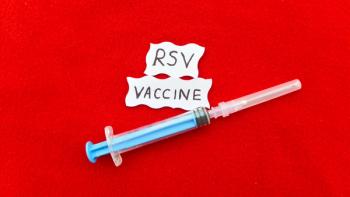
Current Everolimus, Niraparib Combination Is Too Toxic for a Phase 2 Clinical Trial
Investigators must find a different combination or treatment regimen using a dual blockade of the PARP and PI3K/AKT/mTOR pathway.
A recent phase 1 study confirmed that the drug combination everolimus (Afinitor; Novartis) and niraparib (Akeega; Janssen) is too toxic to continue evaluating for patients with advanced platinum resistant ovarian and breast cancers, according to findings published in Cancer Medicine. The treatment combination—a dual blockade of the poly adenosine diphosphate (ADP)-ribose polymerases (PARP) enzyme and PI3K/AKT/mTOR pathway—caused severe hypertension in 14% of the 14-person cohort.
“Most combinations have generally shown exacerbation of toxicity, suggesting [that], although there may be chemo[therapy] potentiation, there is not a wide therapeutic index,” wrote study authors in the paper. “The combination of everolimus and niraparib even at the attenuated doses studied, proved too toxic to continue.”
There are few therapies for patients who have been heavily pretreated for platinum resistant ovarian or breast cancers. Currently, PARP inhibition is the standard of care for patients with endothelial ovarian cancer and BRCA1 or BRCA2 mutations, since it prevents the tumor from repairing damaged DNA—this can lead to tumor cell death.
Blocking the PI3K/AKT/mTOR pathway—which is altered in ovarian and breast cancers—may prevent cancer cell growth and angiogenesis. However, it is toxic and not effective long-term. Investigators past and present have hypothesized that blocking the PI3K/AKT/mTOR pathway could sensitize a BRCA1 mutation to PARP inhibition.
This open-label, single-center, dose escalation phase 1b cohort study aimed to determine the safety and tolerability of everolimus and niraparib in 14 patients with advanced ovarian and breast cancers who have platinum-resistant disease.
The lowest dose administered to patients was everolimus at 5 mg for 3 days/week and daily niraparib at 100 mg for a 28-day cycle. Investigators also aimed to identify the maximum tolerated dose (MTD) and recommend a phase 2 dose (RP2d); unfortunately, even the lowest dose combination of everolimus and niraparib, while moderately effective, was too toxic to consider for further evaluation. With no MTD or RP2d, the combination will not lead to a phase 2 trial.
The most common laboratory-related treatment emergent adverse events (TEAEs) were anemia (11.6%), thrombocytopenia (9.7%), leukopenia (8.4%), elevated alkaline phosphatase (5.8%), neutropenia (5.2%), and elevated alanine aminotransferase (3.9%). Nonlaboratory TEAEs of any grade were fatigue (7.8%), hypertension (7.1%), nausea (4.6%) and mucositis (3.9%). Less than 3% of study participants experienced high-grade thrombocytopenia, hypertension, anemia, fatigue, neutropenia, and elevated alkaline phosphatase.
Hypertension is a notable AE. According to the everolimus package insert, less than 1% of patients experience severe hypertension. This is mirrored by the niraparib insert, also reporting less than 1% of patients will experience severe hypertension.
In the present study, 14% (2 patients) of patients experienced severe hypertension. “We conclude severe hypertension is a probable [AE] of this combination, even at low doses,” study authors wrote. They stopped the study immediately after both hypertensive incidences.
Secondary endpoints evaluated the combination’s toxicity profile and preliminary antitumor activity (objective response rate [ORR] and clinical outcomes). Of the 11 patients evaluated for efficacy outcomes, ORR was 18%, clinical benefit rate (CBR) was 45%, and progression-free survival (PFS) was 6 months. Yet, most surprising to study authors was overall survival (OS), which was 3 times as long as PFS at 18 months.
“The combination of drugs would not be feasible to evaluate in further studies given these dosing limitations,” study authors conclude. “Further investigation of multiagent blockade of the PI3K pathway combined with PARP is warranted.”
Reference
Starks D, Rojas-Espaillat L, Meissner T, et al. A phase 1 evaluation of the safety and tolerability of niraparib in combination with everolimus in advanced ovarian and breast cancers. Cancer Med. 2023; 00: 1-12. doi:10.1002/cam4.6475
Newsletter
Stay informed on drug updates, treatment guidelines, and pharmacy practice trends—subscribe to Pharmacy Times for weekly clinical insights.




















































































































































































































